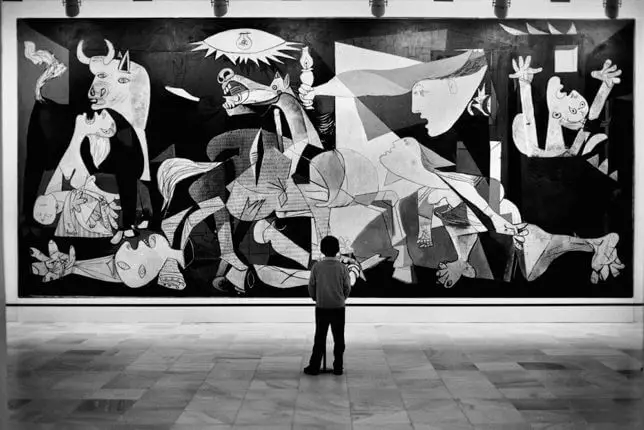Pablo Picasso’s artwork, Guernica, is a significant representation of the devastating effects of war and the artist’s strong dedication to expressing his views on society and politics. This famous painting was made after the bombing of Guernica during the Spanish Civil War. It has become a symbol of being against war and shows how art can make a big impact. This article explores the historical background, symbolism, and enduring influence of Guernica.
Historical Context
The conflict known as the Spanish Civil War: The Spanish Civil War happened from 1936 to 1939. It was a difficult time in Spain because the Republican government and General Francisco Franco’s Nationalist forces fought fiercely against each other. The attack on Guernica town on April 26, 1937, by Nazi German and Italian Fascist forces was a significant moment in the conflict.
Picasso was greatly impacted by the bombing and used his feelings and anger to make Guernica. The artwork was a way to express strong feelings about the harm and pain caused to people who did not deserve it.
Symbolism and Composition of Guernica
Guernica is a large black-and-white painting that is 11 feet by 25 feet, making it very impactful. The image shows a situation of disorder, sadness, and pain.
The artwork has many symbolic elements that show the terrible effects of war and the pain of those who are not involved. The artwork contains images of humans and animals that appear twisted and in pain. There are also broken and separated body parts, as well as a bull, a horse, a woman holding a deceased child, and a structure on fire.
Picasso skillfully combines symbolic elements to tell a story through his artwork that shows the suffering, destruction, and loss felt by the people of Guernica. The artwork strongly condemns the cruelty and lack of compassion in times of war.
Interpretations and Legacy of Guernica
Although Guernica was created in response to a particular event, its themes and symbolism go beyond its historical context. The artwork is now widely recognised as a representation of the terrible effects of war and a call for peace. It has touched people from all over the globe.
After Guernica was made, it was shown all over the world to teach people about the horrors of war and to make people think highly of Picasso as an artist who could see the future. Even today, the painting still has a big influence. It’s been copied many times, talked about in films and music, and is always on view at the Museo Reina Sofia in Madrid.
The impact of Guernica on art and activism has been significant. Its powerful artistic style and political message have motivated many artists, activists, and art enthusiasts throughout the years. The painting shows how people feel and can make us think about society. This proves that art can make us want to change things. It’s a good example of how art can be used to talk about society.
Guernica is a testament to Picasso’s artistic talent and his strong dedication to portraying the harsh realities of human suffering and the aftermath of war. The painting has a lot of meaning and makes people feel very deeply. It reminds us to think about how bad violence is and to work towards a kinder and more peaceful world. People all over the world still connect with this painting. The painting Guernica is a timeless work of art that shows us how powerful art can be in making us think, feel for others, and motivate us to make a difference.

























